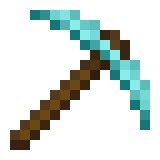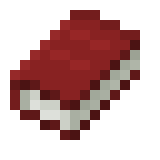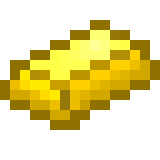Reviewer: John B
Developed By: Brain Seal EntertainmentPublished By: Brain Seal EntertainmentCategory: Role-Playing, Adventure, Strategy
Release Date: 02.27.19Price (At Time of Review): $10.99
Buy Dark Quest II from the Nintendo Switch eShop here.
Generally speaking, I’ll take any chance to go on a quest to kill an evil wizard and loot the hordes of his (or her) minion’s corpses left in my wake. It’s just a great way to pass the time. Doing it in some sort of turn-based, grid-based combat system makes for an even more enticing proposition. That’s a pretty good segue into Dark Quest II for the Nintendo Switch. It’s slightly based off the board game Hero Quest, which tabletop gamers may remember from the late 80s/early 90s. Dark Quest II is a turn- and grid-based dungeon crawling RPG that provides its players plenty of challenge… sometimes a little too much, if we’re being honest.

Wizards Need to Chill Out
An evil wizard has murdered everyone in the castle! Only a nearby village has survived his slaughter… and a wandering barbarian who happens to wander by the town on a whim. As any Conan the Barbarian fan can tell you, barbarians hate wizards more than anything, so he stays in the town to recruit a party and give this evil wizard what’s coming to him – which, of course, is a giant sword in his dumb, evil face. That’s about as deep as the game’s story gets, which… well, not every game needs to have a complex, engaging story, but strategy RPGs have traditionally tended to give me something a little meatier. But as John Wick teaches us, you only need just enough story to justify the mountain of corpses the hero leaves in his wake, and Dark Quest II has that.

The Quest is Dark, But the Dungeon is Well-Lit
Dungeon navigation in Dark Quest II is pretty straightforward, for the most part. The dungeons are made up of smaller rooms, each laid out on a grid of squares. Your characters can move around the room, square by square, collecting treasure, fighting monsters, or discovering secret passages along the way. Some grids are trapped; certain characters’ skills or some special equipment are needed to see traps before you step on them. Different skills are needed to disarm the trap. In one of my less favorite part of the game’s design, if you don’t have a character with a disarm skill (and from what I can tell only the dwarf can disarm traps) and the trap is on a path that is only one square wide, the only way to move forward is to specifically have a character stand on the trap and take the damage. Considering how important conserving health is in this game, it just feels kind of cheap to have this completely unavoidable thing thrown at you. More annoyingly, you sort of have to move through the dungeon one square at a time, because there is no way to stop your character from moving once you’ve set a destination, and your character will not change their predetermined path even if they discover a trap. Yes; your characters are dumb enough to step on traps even when they see said traps beforehand.
In addition to traps, there are other specialty squares on the grid. Most specialty squares have negative effects for you, if any at all. For instance, a sanity trap will force your character to pass a sanity check. If they fail, they will walk over to one of your other characters and attack them. If they pass, nothing happens. There are also skull altars which have a multitude of effects; they may heal you, deal damage to you or an enemy, drop gold, or randomly kill one unit on the screen. You can also come across treasure chests and barrels. Chests can be opened to discover gold and treasure, while barrels can be smashed, which may reveal hidden gold, but may also trigger a hidden trap or cause an enemy to pop out.

Strategic or Statistic?
Most rooms in a dungeon have a few enemies in them. Some have none, and some are packed with tons of baddies. Point is, you’ve got to take them down before they get you. Combat is pretty straightforward; characters are either melee or ranged attackers. Melee units need to be on a tile adjacent to their target to attack, while ranged attackers can shoot from a few tiles away. You get to take your turn before the enemy gets theirs, for the most part. You can be ambushed in a room, when enemies arrive in a room after you do, and in that case the enemies go first. When you’re attacking, you select the tile occupied by your target and your unit moves into range and takes their attack. Or, you can move your unit to a certain tile and then attack, so long as you don’t move to the edge of your unit’s movement range. If you exhaust your movement, you can’t attack. Each of your characters can use one of their skills per turn as well, and you can do that before or after they have attacked, but you must have at least one character with an action left to use a skill. Once your last character has acted, your turn is over and your opponent’s turn begins.
Attack and defense success are determined somewhat randomly according to probabilities shown on the screen when you highlight a unit for attack. Information shown includes both the enemy’s probability to block an attack as well as their chances of landing an attack on you and what their damage range is. You can see your own character’s accuracy or chance to block on the character screen, opened by pressing the Y button. Every enemy type has a set probability, and positioning yourself behind or to the side of any enemy has no additional effect – but their position doesn’t give them an advantage over you, so it evens out I guess. Still, it makes for a slightly less tactical game overall. I realize this can be said of basically any RPG or game utilizing a random number generator for major facets of its gameplay, but it often felt more like I was playing a slot machine than a strategy game. Success in battle felt like it came almost entirely from random chance rather than from anything I did strategically to bring about a particular outcome.

Probably Nothing
This section is one I am a little conflicted about including, but I encountered the situation often enough that I think it’s worth mentioning, at least, even if it just comes off as sour grapes. The attack, defense, and ability-related probabilities provided often seem to be of questionable accuracy. For instance, the barbarian’s counterattack skill is supposed to have a 10% chance to activate. It was the first skill I chose, and the barbarian was attacked literally hundreds of times throughout my time with the game. I have seen that skill activate exactly once. Meanwhile, enemies with only a 10% chance to block an attack block five attacks in a row with alarming regularity. I know we’re dealing with probabilities, so these outcomes are entirely possible, but unlikely runs of luck just felt a little too consistent during my time with the game.

Talk of the Town
Between dungeon crawling expeditions, your party retires to a nearby village. There are numerous shops and services available in town. The blacksmith allows you to purchase and equip artifacts, which is the only way to improve your characters’ stats; there is no leveling up or anything. The alchemist sells you potions to use in your dungeon-crawling adventures; each character can equip two potions and two artifacts. The magician lets you use magic pots you find in dungeons to learn and improve your characters’ skills. The tavern is where you recruit new heroes (a new slot in your team opens up every few missions, but you can only bring three heroes on a mission), up to a total of six (except the dwarf; him you have to save during one of the game’s earlier missions). The gravedigger is where you can resurrect heroes that die during a mission; the more heroes you need to resurrect, the cheaper it is. He takes a percentage of your gold for his services, so it’s best to wait until you can get the group discount before availing yourself of his abilities. You can sell gems you find at the merchant. Finally, Lizie will sell you… erm… “elixirs,” which will boost your stats during your next quest. Once you’ve gotten your party prepared for battle, speaking to the elder brings up your mission map and allows you to choose your next mission.

Stuck in a Rut
Dark Quest II can get very hard. This is partially due to the random nature of battle; if you get stuck in a run of bad outcomes, it’s pretty hard to get out from under it. If your whole party dies, it can be a problem, especially early on. If you don’t have the gold to buy new equipment or restock your potions, getting the money can be a tedious, slow-moving process. You can start a mission, get a little into it until your characters are almost dead (but not quite!), and then abandon the quest, but you lose a portion of any of the money you found. You will keep any magic pots you found, however. You can also replay earlier missions, but every time you beat a mission the difficulty increases for the replay. Monsters will have more HP and their attacks may get stronger, for instance. If you get stuck in a situation like this, it can take a while to get out of it, which is a very frustrating feeling especially when you’re used to being able to grind out a few levels to make your characters stronger and try again in other RPGs.

Mural of Heroism
For all of my misgivings about the gameplay, Dark Quest II is a cool-looking game. Character models and backgrounds have a very cool hand-painted appearance which looks great both on the Switch’s handheld screen and a larger TV. Animations are smooth and natural, creating a very cool visual; almost like you’re commanding a badass fantasy painting from someone like Boris Vallejo or the Hildebrandt brothers. Not Frazetta, though; the color palette is way too bright. It looks a little bit like that show Tigtone, actually, if you’re familiar with that. The music is likewise fantastic, utilizing various string instruments in addition to some electronic sounds to create a perfect soundtrack that screams high fantasy adventure. I think the town music is probably my favorite, but the battle theme with its wailing guitars is near the top of the list, too.
Roll the Dice
I know I harped on the negative aspects of the randomized elements of Dark Quest II’s gameplay, but I understand that it’s done on purpose. It is supposed to evoke a board game played by rolling dice, after all. I still feel that they partially undermine the game’s strategic elements, however, which makes the gameplay feel less satisfying than it could. Besides that, however, I found the game to be pretty enjoyable. Exploring the abilities of the six classes made for an interesting experience (the wizard’s abilities are super OP, get him quick). I loved the game’s art design and music, which is always a plus. If you’re into cool-looking fantasy board games, give this one a try.
Score: 7/10
Buy Dark Quest II from the Nintendo Switch eShop here.
Follow Brain Seal Entertainment
*Review Code Provided by Super Indie
Categories
Recent Posts
Tags
#Broforce #dev #DRIVE #FE #indie #indies #Kickstarter #kickstarter #Minit #nindies #Nindies #Nintendo #NintendoSwitch #Owlboy #RaceDieRun #Switch #SwitchCommunity #switchcorps #SwitchCorps #SwitchCorps #Switchiversary #SwitchLewd #SwitchLewds #Switchruary #Twitch #videogames #VitaIsland #YouTube




Leave a Reply